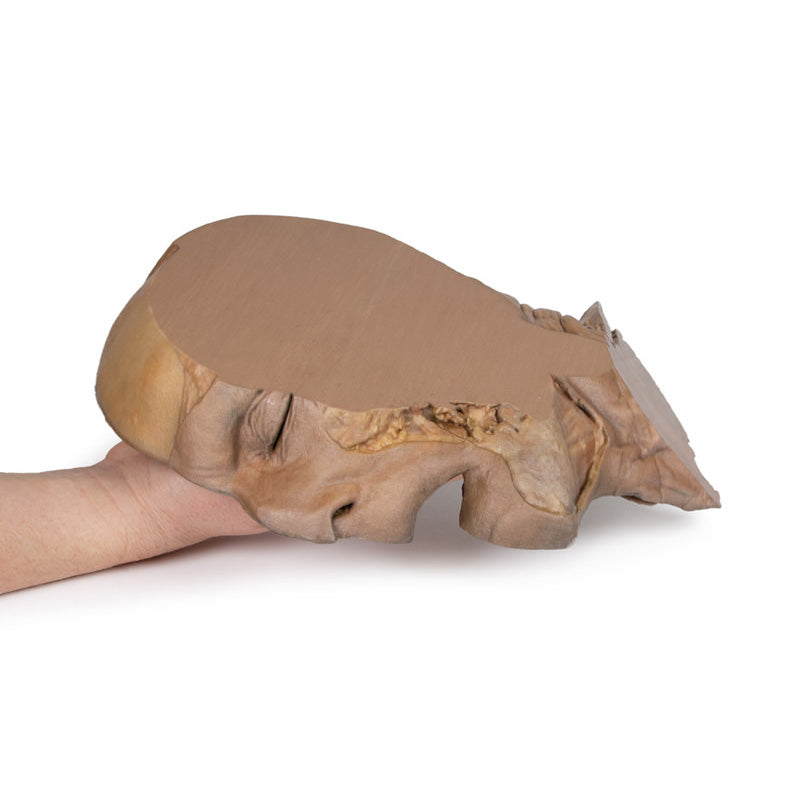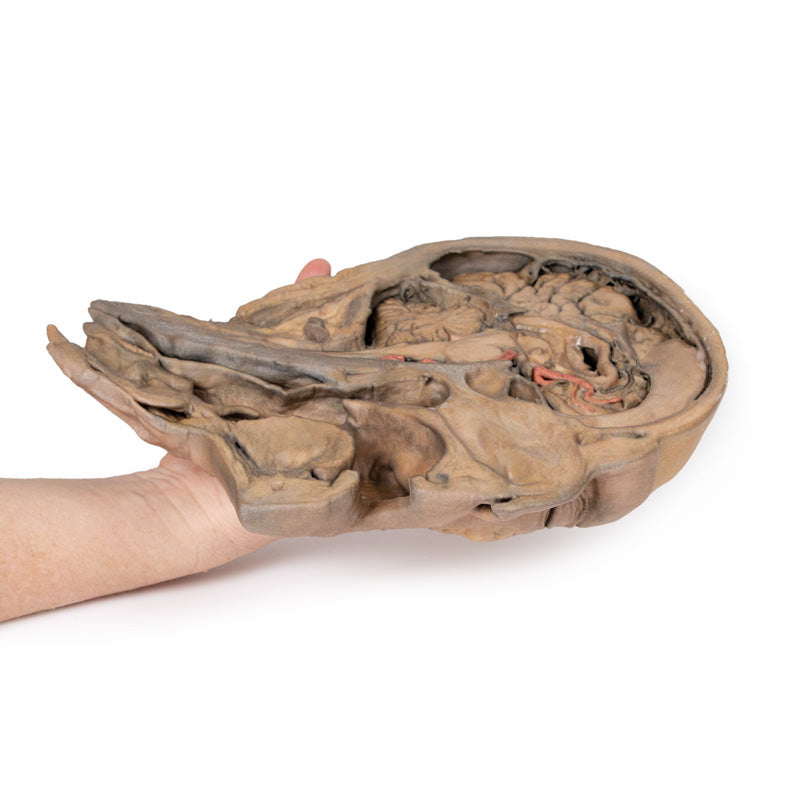Your shopping cart is empty.
3D Printed Parasagittal Section of the Head and Neck
Item # MP1107Need an estimate?
Click Add To Quote

-
by
A trusted GT partner -
FREE Shipping
U.S. Contiguous States Only -
3D Printed Model
from a real specimen -
Gov't pricing
Available upon request
3D Printed Parasagittal Section of the Head and Neck
This 3D model of the head and neck represents a specimen sectioned just off the midsagittal plane to retain some
midline anatomical structures (e.g., the falx cerebri, the septum pellucidum, the nasal septum) that are absent from
other specimens in the series. There has also been fixative-induced shrinkage of the neural tissue. This reduction
in volume has the benefit of exaggerating the space between the brain and endocranial contours and structures which
are normally in closer approximation. The undissected side of the specimen has been digitally removed.
The
anterior part of the falx cerebri has been retained from its anterior attachment at the crista galli to roughly the
midpoint of its extent towards the tentorium cerebelli. At the attachment of the falx part of the dura has been
removed to demonstrate the extent of the superior sagittal sinus within the retained portion of the dural infold.
The brain itself has been sectioned with preservation of the septum pellucidum and the interventricular foramen (of
Monro) defining the passageway between the deep lateral ventricle and sectioned third ventricle. This section plane
also captures the infundibulum extending from the hypothalamus to the pituitary gland, which is seated adjacent to a
well-developed sphenoid sinus. Both the cerebral aqueduct and fourth ventricle are preserved, as are parts of the
left vertebral artery, left posterior cerebral (in cross-section) and the branches of the anterior cerebral artery
passing around the corpus callosum.
The retention of the nasal septum in this specimen (and in contrast to other
3D models of the head and neck in the series) allows for an appreciation of the relationship between the septum and
the hard and soft palates, the entrance of the auditory tube, and the overall nasopharynx relative to the nasal
cavity and oropharyngeal region inferior to it. The muscular wall of the pharynx has been isolated to demonstrate
the position relative to the cervical vertebral column. Inferiorly, the tracheal cartilages including the
epiglottis, arytenoid and thyroid have been retained to demonstrate the position of these cartilages relative to the
hyoid bone, as well as the vestibule, vestibular fold, and vocal fold in cross-section.
 Handling Guidelines for 3D Printed Models
Handling Guidelines for 3D Printed Models
GTSimulators by Global Technologies
Erler Zimmer Authorized Dealer
The models are very detailed and delicate. With normal production machines you cannot realize such details like shown in these models.
The printer used is a color-plastic printer. This is the most suitable printer for these models.
The plastic material is already the best and most suitable material for these prints. (The other option would be a kind of gypsum, but this is way more fragile. You even cannot get them out of the printer without breaking them).The huge advantage of the prints is that they are very realistic as the data is coming from real human specimen. Nothing is shaped or stylized.
The users have to handle these prints with utmost care. They are not made for touching or bending any thin nerves, arteries, vessels etc. The 3D printed models should sit on a table and just rotated at the table.








































































